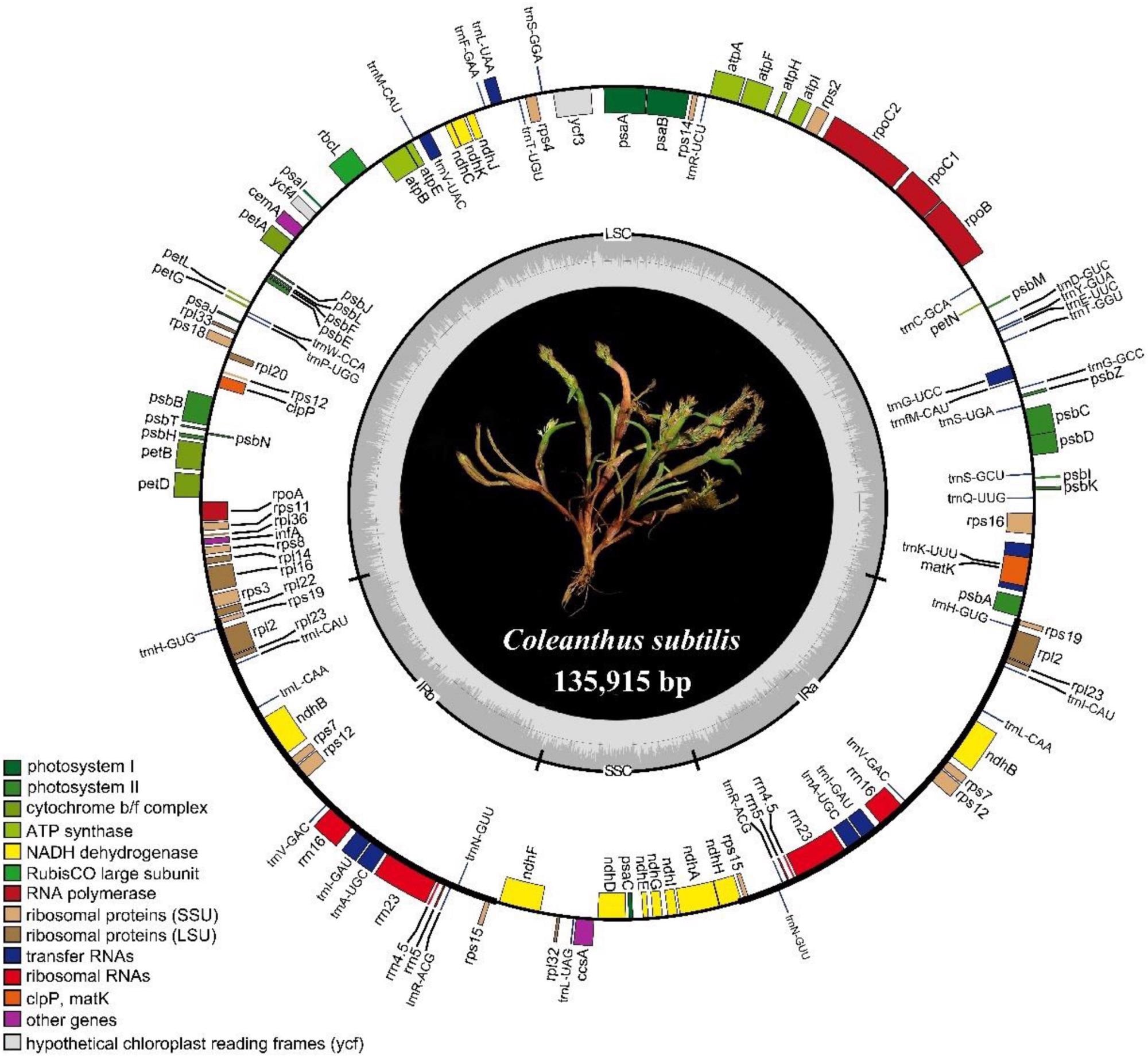Coleanthus subtilis (Tratt.) Seidel (Poaceae) is a unique grass belonging to the Coleanthus Seidel monotypic genus. Because of its extremely short life cycle, tight habitat and breeding requirements, and habitat damage, it is protected in numerous countries, including the Czech Republic, North America, and China. C. subtilis also has a remarkable capacity to reappear in former habitats after long time intervals.
 Chloroplast genome map of C. subtilis. Image Credit: Jing Ren.
Chloroplast genome map of C. subtilis. Image Credit: Jing Ren.
Researchers gathered it on the Yangtze River’s beaches in March 2021, and it was later found in the Songhua River basin in Harbin by researchers from the Chinese Academy of Sciences’ Wuhan Botanical Garden (WBG), nearly 100 years after its previous occurrence in China.
Its distribution along the Yangtze River has never been documented previously, and the mechanisms responsible for its specific distribution are unknown. C. subtilis’ phylogenetic location and the composition of the Coleanthinae subtribe are debatable, and the lack of knowledge on the chloroplast genome severely limits a thorough understanding of its phylogeny.
For the first time, WBG researchers sequenced and assembled the chloroplast genome of C. subtilis and conducted a comparative and phylogenetic study with other Poaceae species.
C. subtilis’ chloroplast (cp) genome has a 135915-bp tetrad structure, which is similar to the length and structural properties of cp genomes from other Poaceae species. Within the cp genomes of C. subtilis, the accD gene and the introns of both the clpP and rpoC1 genes were deleted, while ycf1, ycf2, ycf15, and ycf68 were pseudogenes, which is a rather common phenomenon in Poaceae.
Despite the fact that C. subtilis’ cp genome structure was generally constant, 26 simple sequence repetitions and 13 highly variable loci were discovered, which might be used as crucial Poaceae genetic markers.
Furthermore, the phylogenetic study revealed that Coleanthus and Phippsia were sister taxa and highlighted the connections between Coleanthus, Zingeria, and Colpodium.
This paper gives the first chloroplast genome report of C. subtilis, which serves as a vital data source for further research into the species’ origins and has implications for population genetics and conservation.
Frontiers in Plant Science reported the findings.
Source:
Journal reference:
Ren, J., et al. (2022) Comparative and Phylogenetic Analysis Based on the Chloroplast Genome of Coleanthus subtilis (Tratt.) Seidel, a Protected Rare Species of Monotypic Genus. Frontiers in Plant Science. doi.org/10.3389/fpls.2022.828467.